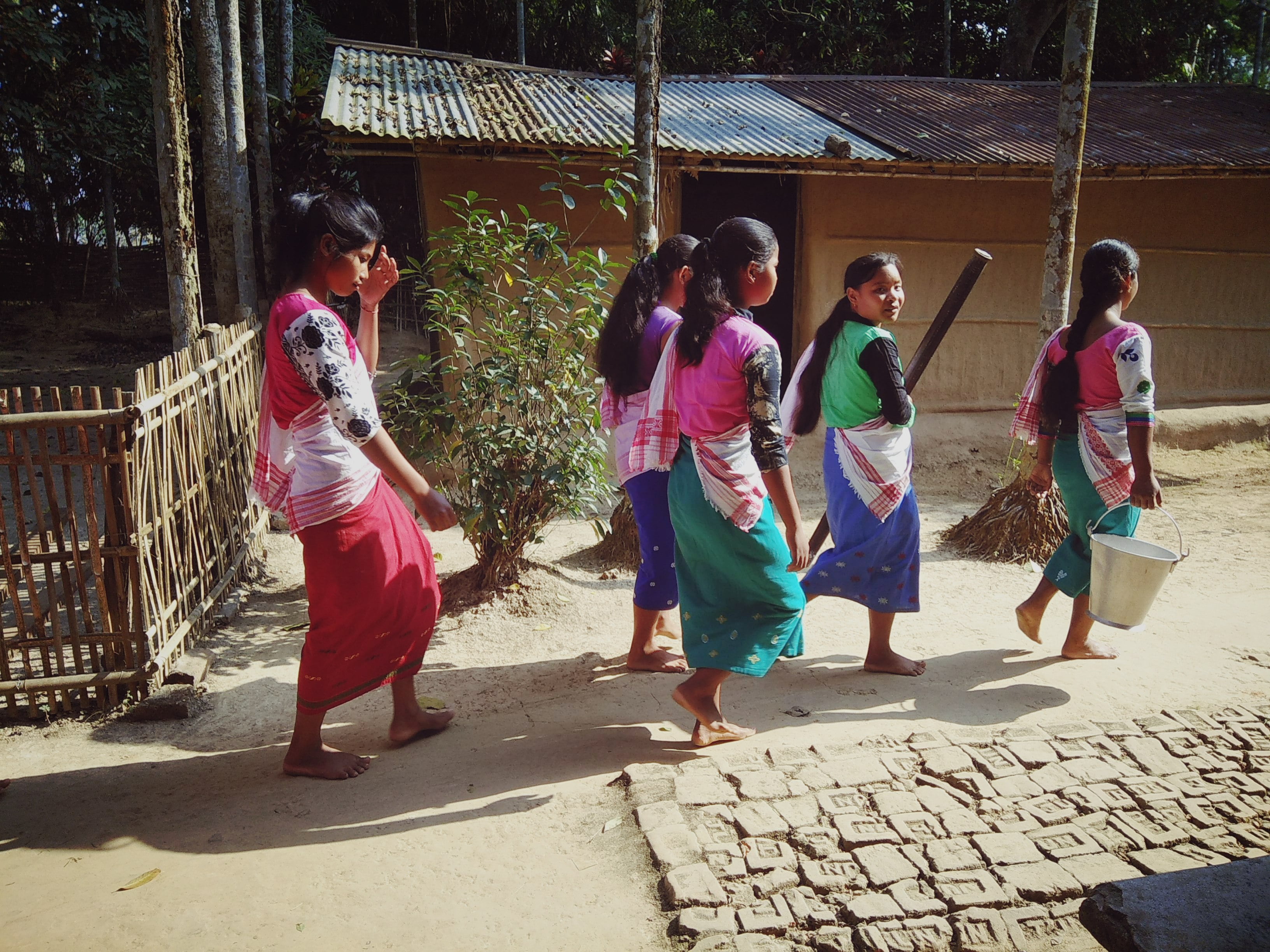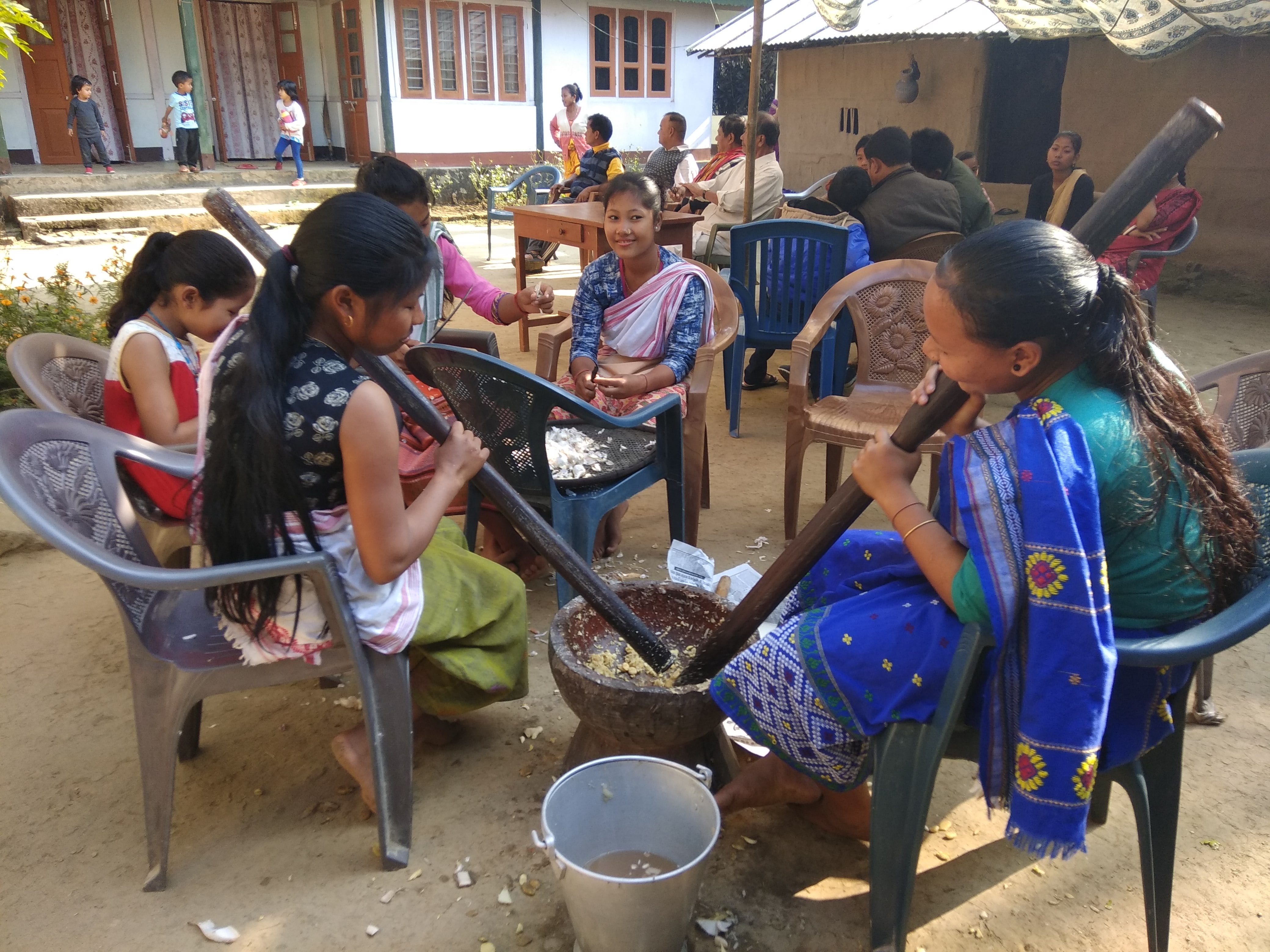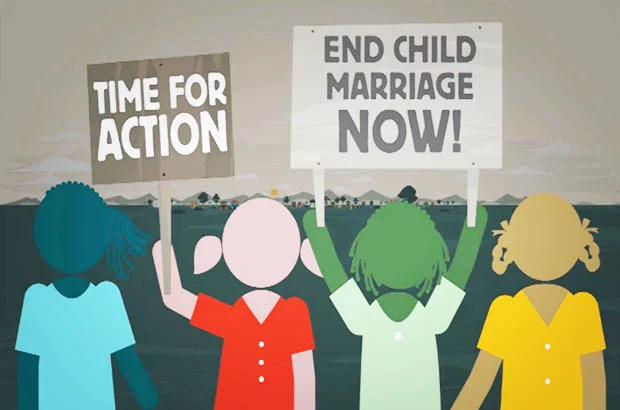A three-hour drive from Guwahati city takes you to Goalpara, an administrative district located about 150 km off the state capital. Endowed in its complex demographics, one of the indigenous community inhabiting this district are the people of the Rabha tribe. The Rabhas are an indigenous tribal group in Assam whose origin is often contested as either an offshoot of the Kacharis, Bodos or even the Garo tribe.
Kuruabhasa is one of the villages in Balijana taluk in Goalpara district. This is a village predominantly inhabited by the Rangdania Rabhas, one of the many sub-groups or Khels of the tribe. The other Khels in the tribe include the Maitoriya, Pati, Koch, Bitliya, Dahuriya, Hana and Totla.
Amidst an interesting discourse of writings on tribal societies in Northeast India, not much of Rabha narratives find space and it still remains largely undocumented. Furthermore, the writings, if any, on Rabhas focus more or less on the debates around the practice of witchcraft and witch-hunting.
Right past National Highway 37, the meandering kutcha roads of Kuruabhasa village situates one in a setting that is significantly different from an otherwise urbane, cosmopolitan life. In one of my recent visits, I happened to chance upon a community feast in the village.
the writings, if any, on Rabhas focus on the debates around witchcraft and witch-hunting.
Everyone in the village seemed to be caught in the hullabaloo and someone in a celebratory tone mentioned that the feast was a wedding feast. What draws my attention is the active participation and what on first glance seem to be ‘visibility’ of women in the various chores that lead up to the community feast.
Young girls gather in groups and contribute to the preparation of the feast, from gathering firewood, preparing the ‘junga’ (the locally brewed rice beer which is an integral part of a Rabha marriage), to pounding rice, etc. A sudden curiosity urges me to delve further into these roles and gendered spaces negotiating between the private and the public. It is interesting here to reflect on the gender roles and what women are expected to ‘perform’ during such community/public events which are strictly monitored as per customary practices of tribes.

Historical accounts suggest that the Rabha tribe has matrilineal roots and there still continue to be traces of the same. However, assimilation with mainstream Hindu society and further processes of Sanskritisation has shifted the same to a more patriarchal structure in practice.
The barai system plays an important role in the regulation of marriages in the Rabha tribe. The barai, also alternatively called a bar/housug, is the equivalent of a clan and in theory, no marriage can take place between two people of the same clan.These rules of prescription and prohibition have undergone a tremendous shift with processes of assimilation through which the tribe has largely adopted caste Hindu practices.
As far as marriage is concerned, there are different forms of marriages that are sanctioned in the tribe. Cross-cousin marriage is also seen as a common practice in this tribe. Some other forms of marriage include – Nok-dhankay– a love marriage; Buri tshinkay– socially arranged marriage through the negotiation of parents; Krantshi buri– marriage ceremony without feasting; Saja biya marriage by negotiation; Gharjai biya (marriage by elopement). Off late, there are more marriages happening outside one’s tribe and there is a gradual acceptance of the same.
As far as rituals of marriage across the Rabha sub-groups are concerned and although there are commonalities, it is still highly problematic to brush the same in one single stroke as there are a number of areas where the practices vary. There is a general belief that amongst the Rangdania Rabhas the rules still continue to be rigid, unlike the other sub-groups.
Amongst all the other groups, it is only the Rangdania and the Maitoriya subgroup that have continued to hold onto their own Rabha language and hence a certain degree of hierarchy despite the other sub-groups like the Pati Rabhas being numerically more. Kuruabhasa village, as mentioned is a Rangdania Rabha village and this particular marriage I witnessed was between a Rabha and a non-Rabha.
Just like the barai which is an important aspect in marriages amongst Rabhas, the Gyaati – loosely translated into people from the vicinity sharing a common way of social life and organization, is another important aspect in any Rabha marriage. The social sanction and validation by the gyaati is something which holds the community together, fostering a sense of solidarity.
Also Read: The Bronze Sword Of Thengphakhri Tehsildar: The Story Of A Bodo Revolutionary
The community feast is thus in a way to receive the social sanction and acceptance from the gyaati, even in cases where one of the partners in the wedlock may be from outside the tribe. It is generally held that in cases where one does not organize such a community feast for the gyaati, the Rabha family who enters such wedlock is ostracized and the gyaati further will not participate in any of the social events organized by the respective family, particularly mortuary rites and ceremonies.
A marriage ceremony thus opens up ample scope to revisit the spaces and performances of roles that are collectively held onto. In most communities, women’s participation in various tasks that lead up to the auspicious event like marriage is strictly monitored and there are only certain spaces where women’s entry is allowed.
At first glance, in a Rabha marriage, one notices a high level of women’s participation and visibility as far as work/labour is concerned, though there is a deep-rooted gendering of these roles that have been practised over time. Women’s roles are more constructed in activities that centre around the hearth or the area allocated for cooking the feast.
Many tribal societies in northeast India, prohibit women from cooking for community feasts and only men are assigned this role for occasions that are by and large considered auspicious. This definitely indicates a certain degree of an idea of ‘purity and pollution’ that lead to the assignment of these roles.
However, in sharp contrast to this, amongst the Rabhas, it is the women who are seen to be in charge of cooking the feast, whereas the men only provide a helping hand. So while this challenges the dominant practice (where men cook during auspicious occasions), it also further relegates women to certain gendered roles that have historically been seen as synonymous with women.
Women’s roles are constructed in activities that centre around the hearth or the area allocated for cooking the feast.
Women are also seen to be active in chores that require a lot of physical labour, from carrying huge pots that contain the junga, or foodgrains. Further, it is only a certain category of women who are allowed to participate in these chores. Widows, menstruating women, women who are divorced or separated are strictly prohibited from such participation.
Hatasuani – the ceremony of distributing food to the public for the first time, is another very important ritual in a Rabha marriage. As per customary practice, the Rabha bride is expected to cook the rice that will be served to the entire gyaati. She has to serve the rice to the gyaati who will join the feast.
First, it is the male members who will sit in rows on the ground and will be served in banana leaves. Women and children are served only after the men. A heavy hollow wooden utensil is supposed to be used for serving the rice and the bride is made to carry it all by herself.
It is important that the rice that is taken in the wooden utensil suffice for everyone who sits for the feast and the bride is not allowed to ask for rice a second time. This is a way to test her managerial skills and if at all a woman will be capable of saving and managing resources even in times of acute crisis.
The dominant discourse which suggests the egalitarian structure in tribal societies has been rightly contested. By and large, Rabha women hold an inferior position to that of their male counterparts. While there are instances where boundaries of roles and division of labour get blurred, there are subtle ways in how patriarchy seeps in through nuanced forms and are in much need of contestation.
Also Read: Meet The ‘Pad Women’ From Assam Who Are Spearheading Access To Sanitary Products
References:
The Rabha and Their Social Movement (1925-1950): A Case Study of North Bengal, in IOSR Journal Of Humanities And Social Science.
Image Credits: Minakshi Bujarbaruah
About the author(s)
Minakshi Bujarbaruah is a researcher with over a decade of experience as a development sector professional and currently working in the space of media & entertainment. Her interest areas are- gender rights and gender justice, education and disability.





